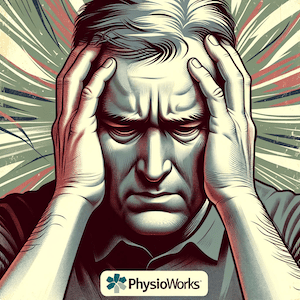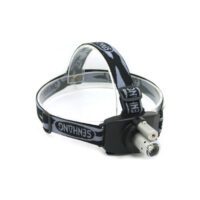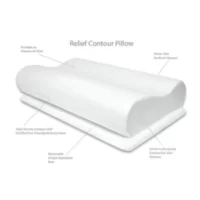Severe Headache Symptoms
When Should You Worry About a Headache?
Experiencing a headache can range from a mild inconvenience to a warning sign of a serious health issue. It’s important to distinguish between common headaches and those that require immediate attention. In this comprehensive guide, we’ll explore the severe headache symptoms, the latest research, and the effective role of physiotherapy in headache management.

Severe Headache Causes and Identifying Red Flags
A headache can range from a mild, occasional annoyance to a symptom of a severe health condition. Recognising the red flags is crucial for timely intervention. The causes of severe headaches can include brain tumours, aneurysms, strokes, meningitis, and other systemic illnesses. If your headache presents with the following features, it’s time to seek medical advice:
- Unprecedented Severity: The worst headache you’ve ever had or a type that’s different from your usual ones.
- Triggered by Exertion: Includes headaches induced by exercise, coughing, sneezing, or sexual activity.
- Age-Related Concerns: Especially if you’re over 50 years old.
- Persistent Despite Treatment: When headaches don’t subside even after standard treatment.
- Sudden Onset: A headache that appears abruptly and intensely.
- Neurological Symptoms: Includes motor weakness, memory loss, or slurred speech.
- Compromised Immune System: Particularly in individuals with HIV or similar conditions.
- Accompanied by Systemic Symptoms: Such as fever, weight loss, or a rash.
Latest Research in Headache Management
Recent studies emphasise the role of physiotherapy plays in managing headaches, especially tension-type headaches, TMJ headaches and cervicogenic headaches.
Techniques like manual therapy, postural correction, and specific exercises can significantly reduce the frequency and intensity of these headaches.
Physiotherapy’s Role in Headache Management
As physiotherapists, we focus on identifying and treating the physical factors contributing to headaches. This approach may include:
- Postural Analysis and Correction: Poor posture can lead to tension-type headaches.
- Manual Therapy: Techniques like soft tissue work and joint mobilisation can relieve headache symptoms.
- Exercise Therapy: Tailored exercises to strengthen and relax the muscles around the neck and shoulders.
- Education and Lifestyle Changes: Advice on ergonomics, relaxation techniques, and hydration.
Less Urgent and Severe Headache Types
Not all headaches are indicative of a severe condition. Common types such as migraines, tension-type headaches, and cluster headaches, while distressing and disruptive, often don’t signal underlying diseases. These headaches typically respond positively to a combination of medication, physiotherapy, and lifestyle adjustments.
Migraines, characterised by intense, throbbing pain often on one side of the head, can persist for hours or even days. They may be accompanied by sensitivity to light and sound, and at times, nausea. Migraines are multifaceted and can be triggered by various factors, including stress, hormonal fluctuations, or certain foods and drinks.
Tension-type headaches are the most common. They generally feel like a constant ache or pressure around the forehead, temples, or back of the head and neck. Often linked to stress or poor posture, these headaches can last from minutes to days.
Cluster headaches are rarer but can be excruciatingly painful. Occurring in cyclical patterns or clusters, these headaches are marked by intense burning or piercing pain behind or around one eye. They can be so severe that they’re sometimes referred to as ‘suicide headaches.’
Despite their severity, these types of headaches usually don’t originate from serious medical conditions. They respond well to a holistic approach:
- Medication: Over-the-counter pain relievers are often effective. For frequent or severe migraines, prescription medications may be necessary.
- Physiotherapy: This plays a crucial role, especially for tension-type and cervicogenic headaches. Physiotherapists employ techniques like manual therapy, specific exercises, and advice on posture and ergonomics to alleviate pain and prevent recurrence.
- Lifestyle Modifications: Simple lifestyle changes can significantly help. Regular physical activity, adequate hydration, sufficient sleep, stress management, and dietary modifications can aid in managing and reducing the frequency of these headaches.
Understanding these less severe types of headaches is key to effective management. While they may not indicate a severe health issue, their impact on life quality can be substantial. Through a combination of medical, physiotherapeutic, and lifestyle interventions, individuals suffering from these headaches can achieve relief and enhance their daily lives.
What to Do? Seeking Professional Advice
If you’re experiencing any red flag symptoms or are concerned about your headaches, it’s crucial to consult with a doctor. A physiotherapist can offer a comprehensive assessment and create a tailored treatment plan to address your specific needs. They can also work in conjunction with your doctor to ensure a holistic approach to your headache management.
Conclusion
Understanding the signs of a severe headache and seeking timely professional advice is vital for your health. While many headaches are benign and manageable, always pay attention to the red flags. With the help of physiotherapy and medical intervention, most headaches can be effectively treated, allowing you to return to your normal life.
For more detailed information and specific advice, visit PhysioWorks, where you can find a wealth of resources on headache management and physiotherapy treatments.
Remember: When in doubt, always consult your doctor or a physiotherapist to ensure the best care for your health.



























































